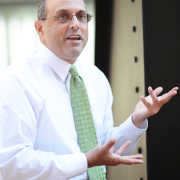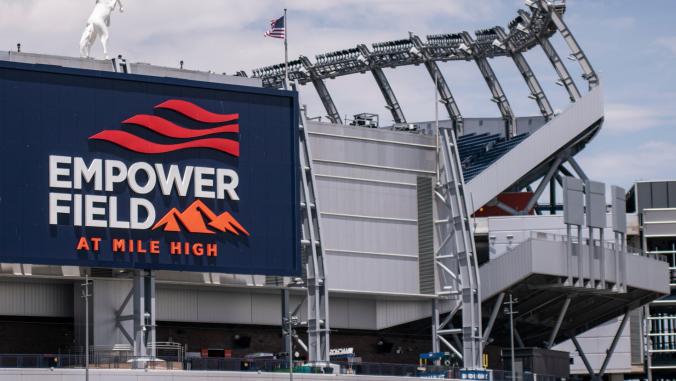How a Twin Cities brownfield became centerfield for green sports
A Minneapolis baseball park illustrates the myriad opportunities for reuse when it comes to new infrastructure projects.

Several sports venues justifiably can lay claim to the coveted “Greenest Stadium In the U.S.” title.
Levi’s Stadium, the LEED Gold-certified home of the San Francisco 49ers that will host Super Bowl 50 in February (which I profiled here when it opened last summer), certainly merits support. TCF Bank Stadium in Minneapolis, home of the University of Minnesota Golden Gophers football team, also earns kudos for being the first LEED-certified college football stadium.
But a soon-to-open stadium across the Mississippi in St. Paul, despite its relatively modest minor league baseball pedigree, really may be in line to wrest the title away from its bigger brethren.
While green goliaths such as Levi’s Stadium and TCF Bank Stadium almost certainly will have a bigger environmental impact due to their sheer scale — bigger crowds, higher league profiles — perhaps CHS Field, the new, 7,000-seat home of independent minor league baseball club the St. Paul Saints, will win one for the little guys.
Setting the green standard
CHS Field is the first sports venue to meet Minnesota’s B3 Sustainable Building 2030 Energy Standards, “an energy conservation program designed to significantly reduce the energy and carbon in [the state’s] commercial, institutional and industrial buildings.”
Perhaps most impressive is that the Saints, along with builder and real estate manager Ryan Companies, transformed a site that was once among the 10 most contaminated brownfield sites — land previously used for commercial or industrial purposes that has been contaminated with hazardous waste and/or pollution — in the Twin Cities.
The venue is also the first major sports venue to reuse rainwater for field irrigation. In addition, builders reused nearly all of the former Gillette warehouse building to construct CHS Field, sourcing 20 percent of those materials as foundational elements, then recycling and reusing the rest in the form of crushed material that fills in below the playing field.
When it comes to energy, CHS Field uses District Energy St. Paul’s system for heating and cooling loads. District energy systems, which are about 35 percent more efficient than traditional grid supply, produce steam, hot water or chilled water at a central plant. That water or steam is then piped underground to individual buildings for space heating, domestic hot water heating and air conditioning.
Solar energy also plays a big role at CHS Field, as Xcel Energy helped to fund a 100kW solar system which supplies 12.5 percent of the ballpark’s power.
In terms of local community impacts, CHS Field also was designed to be more than a stadium. A portion of the site was turned into a neighborhood dog park and rain garden featuring local artwork.
What's in a stadium name?
While the list of green features in the stadium itself is fairly exhaustive, there's also the question of which businesses have attached themselves to the project.
For the venue's naming rights holder, you may wonder, "What is CHS, and does the company share the ballpark’s green DNA?"
I must admit I hadn’t heard of the company before researching this story. CHS is a Fortune 100 — not 1000, not 500, Fortune 100 — company headquartered in Inver Grove Heights, Minn. It is an 86-year-old, farmer-owned cooperative that describes itself as working to help America’s farmers be more successful.
So, CHS looks like it’s part of Big Agriculture (not an environmentally friendly sector, despite some flowery public service announcements on the Sunday talk shows), albeit a player owned by small-ish farmers. But the company also owns Cenex brand gasoline and diesel fuels.
It seemed to me that the ballpark is much greener than its naming rights partner. But appearances can be deceiving, so we did some digging.
According to the sustainability section of its website, CHS has taken some positive greening measures, the most impressive of which is that its McPherson, Kan., refinery reducing its reported sulfur dioxide emissions by 95 percent and volatile organic compounds emissions by 70 percent over the past decade.
However, resolutions adopted by the delegates to its December annual meeting tell a far less green story. One such resolution opposed “climate change treaties that harm the US Economy.” Another supported “technology-neutral energy policies,” which I read to mean that fossil fuels and renewables are of equal value in terms of future development (really?).
My preliminary conclusion is that the Saints could’ve found a more mission-aligned naming rights partner.
Perhaps this bit of a greenwash may knock CHS Field a peg below the Levi’s Stadiums of the world. But it should not detract from the great work done by the Saints, builder Ryan Companies and the city of St. Paul to build one of the country's greenest stadiums, if not the greenest.
This story originally appeared at GreenSportsBlog.





